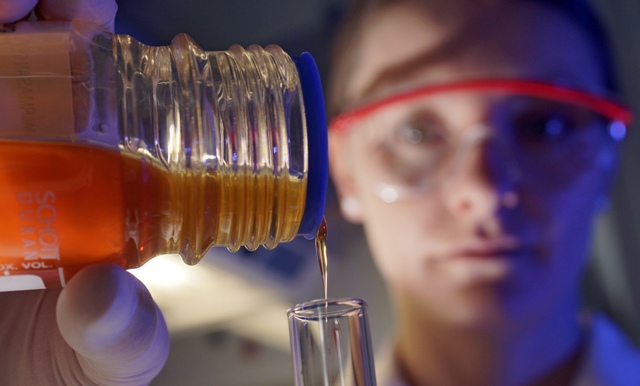Q: What do you call Alternative Medicine that survives double-blind laboratory tests?And that's the crux of the issue, isn't it? There's no Big Pharm conspiracy against homeopathy, for example. What multi-national conglomerate wouldn't love to slosh some magic water in a bottle and sell it for 10 bucks or more? It just doesn't work.
A: Regular Medicine.
Yet con artists have cleverly used 'alternative' medicine to appeal to people with a faux independent mindset; too smart and progressive to be limited to what they see advertised on TV so they fall for what they see advertised in emails. Unfortunately, longstanding natural remedies have also been caught in the undertow of charlatans exploiting gullible people in order to get rich. Yet all is not lost. If obscure natural medicines want to go from being dangerous ideas promoted by weirdos to regular medicine, it just takes some tests.
The only reason most people heard of Frankincense was because 2,000 years ago some visitors (Wise Men? Kings? Magi?) gave Jesus Christ basically the worst baby gifts ever. But that doesn't mean the gifts weren't valuable. Frankincense is in the Burseraceae family of incense trees, genus Boswellia and the burning of Boswellia resin has been part of religion since ancient days. It was also quite expensive back then. By expensive, we are talking about a world where only the rich wore cotton, a luxury we all have today, so carpenters were not buying frankincense for home use.
Ayurvedic practitioners have used frankincense for millenia and it seems to work for some skin issues, but that really isn't enough to get approval in Europe or the USA as an anti-inflammatory. A research team wants to move frankincense from alternative medicine to regular old medicine so they are doing the tests. They say they have determined how boswellic acids interfere in the process of inflammation.

Jena University Ph.D. student Olga Scherer pours a delicious-looking glass of resin from Boswellia trees, to compare the resin of different kinds of frankincense Photo: Jan-Peter Kasper/FSU.
"Boswellic acids interact with several different proteins that are part of inflammatory reactions, but most of all with an enzyme which is responsible for the synthesis of prostaglandin E2," says Professor Dr. Oliver Werz of the Friedrich Schiller University Jena. Prostaglandin E2 is one of the mediators of the immune response and is important in the process of inflammation. "Boswellic acids block this enzyme efficiently and thereby reduce the inflammatory reaction."
What did they find? Boswellia papyrifera from the Northeast of Africa is ten times more potent than the more commonly used Boswellia serrata from India. But that is not the same thing as a clinical trial, so don't get too excited. I recently again made reference to DDT, and the goofy anti-science bans that led to replacements that were less effective and more dangerous, and the researchers believe going old-school, like frankincense, will have fewer side effects than newer anti-inflammatories like diclofenac or indometacin.
It's not all myrrh and gold, though. If frankincense catches on, look for environmentalist progressives to go to war with their alternative medicine siblings because Boswellia trees are an endangered species. In the meantime, remain skeptical until that 'alternative' label gets removed. Ayurvedic medicines sold over the Internet have alarming amounts of lead, mercury and arsenic.





Comments